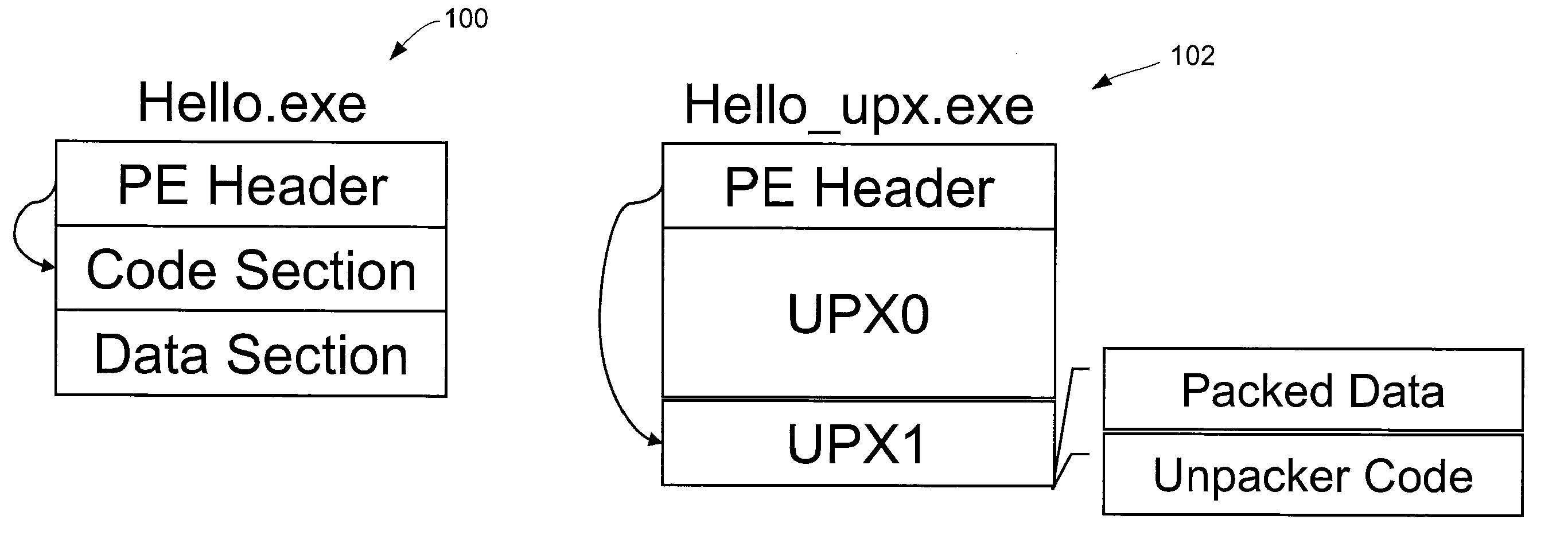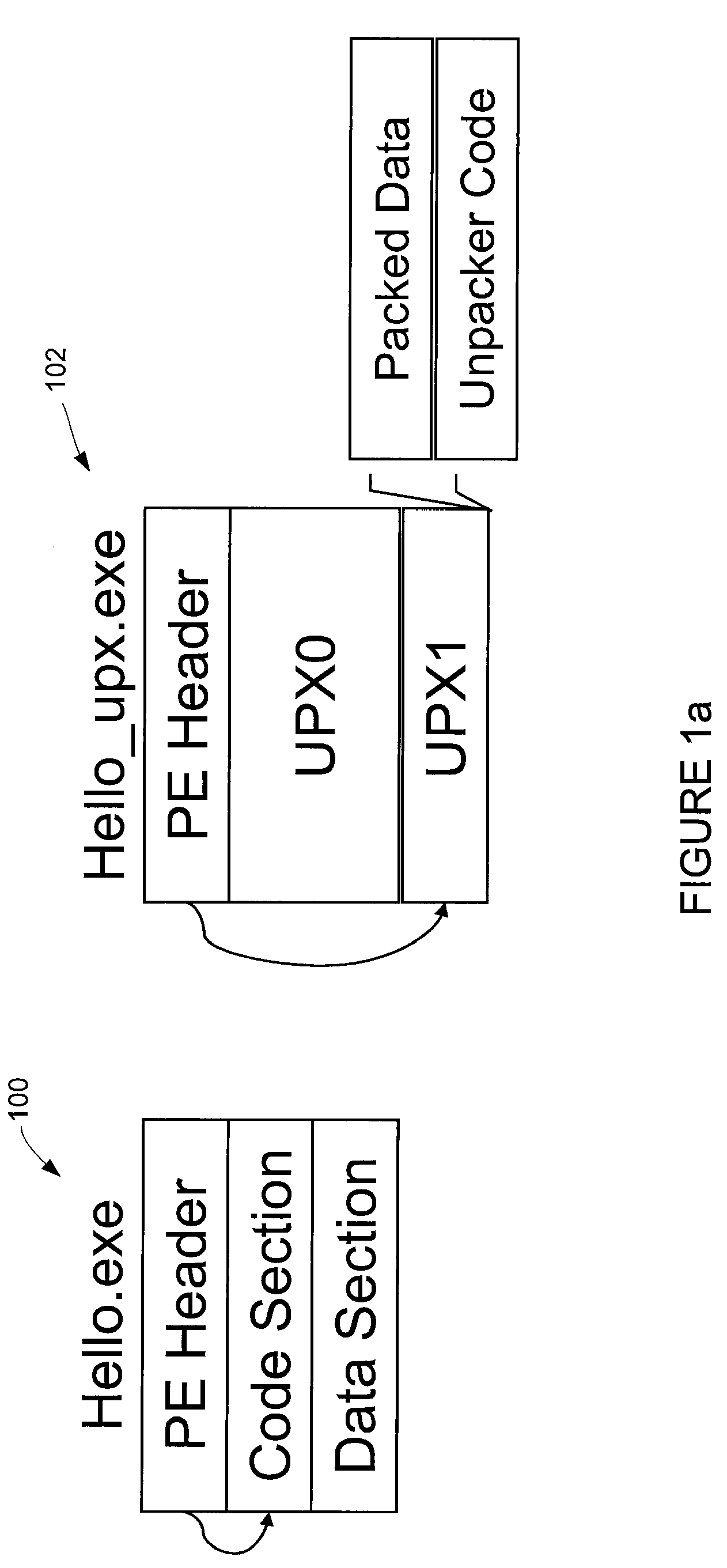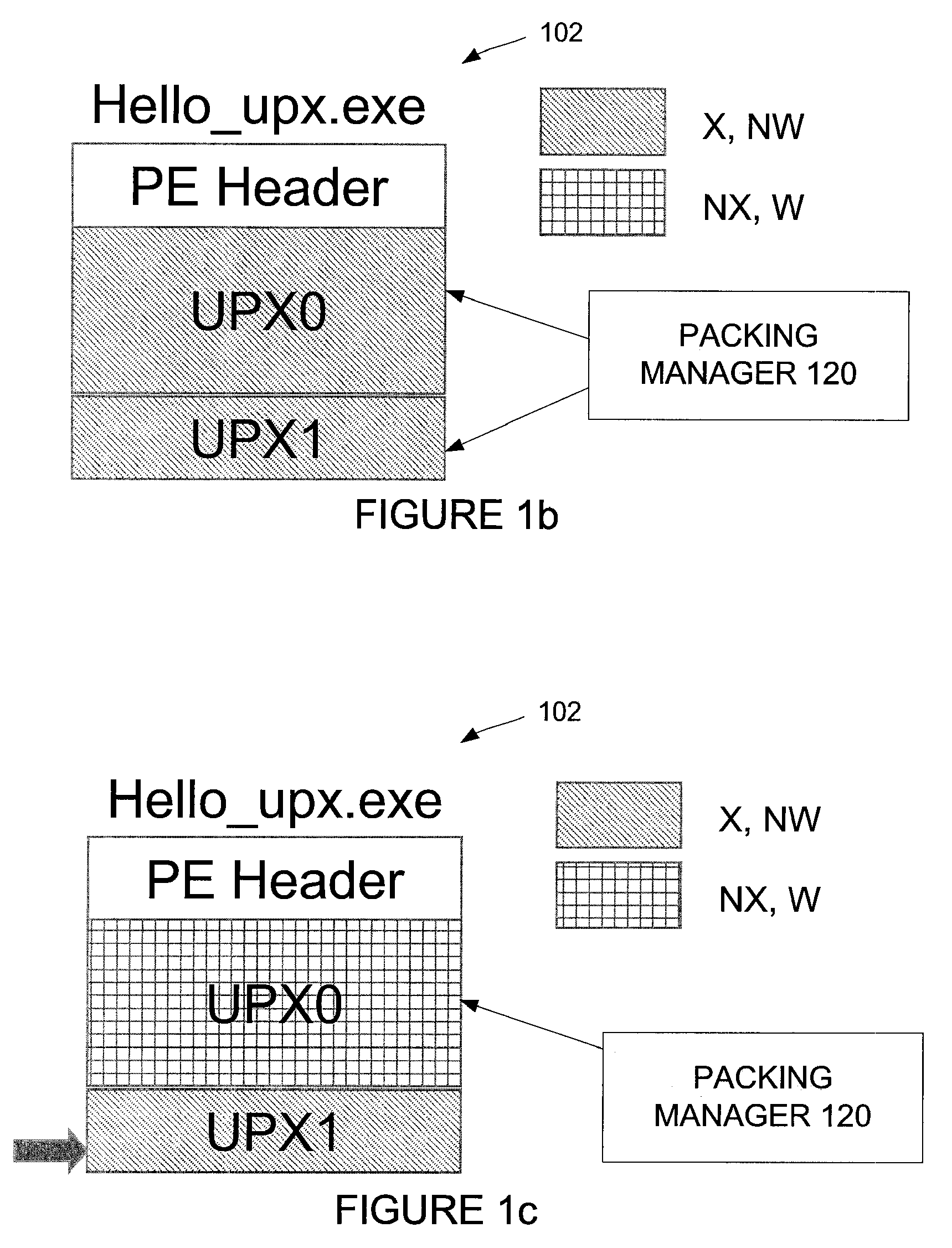Automated unpacking of executables packed by multiple layers of arbitrary packers
a technology of executables and unpacking, applied in the field of computer security, can solve the problems of malware detection methods, antivirus software too has to evolve, and computer systems are constantly threatened by a risk of attack from malicious computer code or malwar
- Summary
- Abstract
- Description
- Claims
- Application Information
AI Technical Summary
Benefits of technology
Problems solved by technology
Method used
Image
Examples
Embodiment Construction
[0019]A “packer” is a program that can compress or encrypt an input executable (e.g. a binary file) into another executable that is different at the binary level. As an example of a typical packing process, a packer P reads in the byte sequence of the input binary O and compresses or encrypts this byte sequence into another byte sequence called O′, and adds an unpacker routine U to O′ to form the final packer output, P(O). When P(O) runs, the program's control first goes to the unpacker routine U. If AV scanning is performed on P(O) at this point, the scan will not detect the underlying malware program O as it is disguised by the packer. The unpacker routine U decompresses / decrypts O′ and restores the original program O in memory. Then, control is transferred to the main entry point of O as if the unpacking process never took place. Because P(O) is substantially different from O, the byte-level signature for O is not applicable to P(O). The AV engine fails to detect P(O) as malware,...
PUM
 Login to View More
Login to View More Abstract
Description
Claims
Application Information
 Login to View More
Login to View More - R&D
- Intellectual Property
- Life Sciences
- Materials
- Tech Scout
- Unparalleled Data Quality
- Higher Quality Content
- 60% Fewer Hallucinations
Browse by: Latest US Patents, China's latest patents, Technical Efficacy Thesaurus, Application Domain, Technology Topic, Popular Technical Reports.
© 2025 PatSnap. All rights reserved.Legal|Privacy policy|Modern Slavery Act Transparency Statement|Sitemap|About US| Contact US: help@patsnap.com



